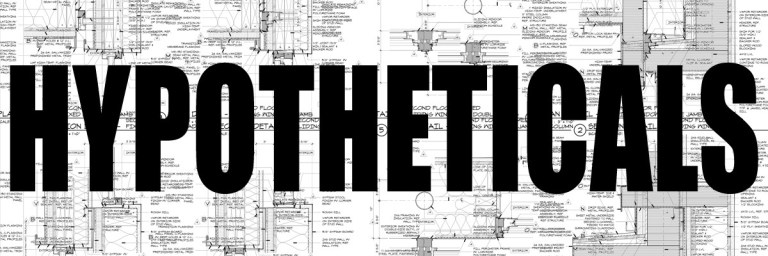How much time have you spent thinking about the legal side of architecture? If you are like most architects, you probably haven’t spent enough time thinking about it. While it may not be the sexiest part of the architectural profession, it is something that every licensed architect must consider on every single project.
Since I am not an expert on the legalities of our profession, joining in with us on today’s podcast are Mike Koger AIA, Esq. – Senior Manager and Counsel, AIA Contract Documents, and Salvatore B. Verrastro AIA, FCSI, CCCA, CCS, NCARB, and a Principal at Spillman Farmer Architects.
These two gentlemen worked with the AIA to create and guide some of the AIA Contract Documents and we are going to pick their brains and get some interesting stories, some tips on how to avoid common mistakes, and discuss the key areas that you should pay attention to in your own contracts.
 Photo Credit: Don Sniegowski
Photo Credit: Don Sniegowski
Learn from Others Mistakes. [03:00 mark]
The legal lesson to best learn is one that you can learn from someone else’s mistake. Many contracts in the AEC industry are based on a long history of instances. Somewhere, some time ago an architect was burned by a situation and so they added it to their contract language. So when you sit down to make the decisions about the legal concepts of your projects, remember that others have been here before you. Look to them as an example of what TO DO and also what NOT TO DO. You may not always have to spell out the services you are going to provide and the ones you will not in great detail, but sometimes it is better to err on the side of too much information. Of course, this has its limits, no need to state you are not going to spend your vacation on the moon or spend time jumping in the lake. But even on the smaller projects an architect may design, there is always room for a misunderstanding between what is expected and agreed upon by each person.
Fruits cost Money. [12:45 mark]
One of the larger issues that make architects take legal action is due to non-payment. If you work in the profession, this probably does not surprise you. It’s important in every scenario that you, as an architect, do not give up the rights to your intellectual property. “The fruits of your labor” as Bob so aptly puts it. Architects provide services, not just drawings, so make sure that you do not give a non-paying client your drawings, even though they were solicited by the client because they represent your intellectual property. Clients do not own them and especially if they haven’t paid for them! They are your work products and they constitute payment. As a firm owner, I know that I struggle with this idea quite a bit. You want to have faith that someone is going to pay your for your work. But sometimes, the world just does not work that way. So some caution here seems to be necessary no matter how much you “like and trust” your client. From experience, I know this is not an easy lesson to implement. I have let myself get into this situation more times than I care to admit. So just keep that little tidbit in the back of your mind. Your fruit isn’t free!
Documentation is Key. [18:23 mark]
This is one of those lessons that you learn as you get more time in your career. Although for Mike, he learned this one early in his short time as an architectural employee. The key to keeping yourself out of the “bed of confusion” and possibly legal “hot water“ is to document as much of the process as possible. Whether it is during design or construction phase of work, when decisions are made that veer even slightly from the contract documents, drawings or just seem like important issues, put them out to the team in writing to make it undeniable that everyone understands what is happening. Sometime in the future, that could save you. Or save the project, the contractor, the owner or anyone else; it’s not always for your own benefit but the benefit of the project.
The Biggest Take-Away [37:06 mark]
As with any relationship in life, both personal and business, it is all about understanding. It is critical in your legal dealings with clients or construction teams or other business entities to make sure you clearly understand what is expected of you and your team. Honestly, no one in the process wants a project to go bad or create complicated relationships. So make sure before you start and as you move along in the design and construction process, everyone involved is clear about their responsibilities. It seems according to our guests (and my experience) that most legal issues that confront architects stem from a basic misunderstanding between the people involved. Mike and Sal offer more tips about the basic principles of the architects’ legal issues but ultimately, it seems that communication is THE root. So just remember that this stuff is just like all the other relationships you want to keep on solid ground, make sure you are always clearly communicating to the best of your abilities for every situation. If you don’t realize this already from this blog or the podcast, there is not a solid level of understanding about what we do as architects and the processes we go through to create a project.

Hypothetical [45:35 mark]
For this episode, we have a new hypothetical to consider, and we asked our guests Mike and Sal to join in. Here is the situation:
"If you had no physical or mental requirements for sleep, how would that change your life?"
Trying to fight off the boredom that might accompany an existence that is perpetual is one of the major concerns when trying to determine how to spend the free time you acquire by not sleeping. Can you sustain the activity you choose to fill your time? Let’s just say that somebody chooses to play video games and someone decides to use their time to save humanity. Think you who chooses which? Mike Koger and Sal Verrastro join us in this seemingly easy hypothetical, only to discover that the answers are not as obvious as you might think.
So as you can see, the legal portion of architecture is full of issues that can impact your overall ability to create great designs, not to mention that it can impact your career in ways you may have never imagined. So the heart of this episode is to expose everyone to yet another facet of the profession of architecture and how much information that we as architects are required to know in pursuit of our ideas.
We would like to thank our guests Mike Koger and Salvatore B. Verrastro for joining us today and providing their expertise on legal matters of design.
Cheers,

Outro [53:41 mark] …
All this legal talk is making it hot in here
Screw the planet
I thought we were having fun …
Don’t look at me
Get free samples of the AIA interiors documents at www.aiacontracts.org/lifeofanarchitect.
Here are more complete bio’s from our guests on today’s episode:
Mike Koger, AIA, Esq., Senior Manager & Counsel, AIA Contract Documents
Mike Koger is an attorney on the Contract Documents team at the American Institute of Architects in Washington, DC. At the AIA, Mike works with a group of attorneys and architects to create and revise the AIA contract documents. Mike practiced civil litigation prior to joining the AIA, primarily representing contractors and property owners in construction-related disputes. Mike also worked as an architect and briefly as an urban planner in San Diego before transitioning to the practice of law. As an architect, Mike has worked on a variety of medical laboratories, research and development facilities, and residences in Southern California. Mike received a Bachelor of Architecture degree from Ball State University and graduated cum laude from Tulane University Law School. He is admitted to practice architecture in Indiana and law in the District of Columbia and California.
Salvatore B. Verrastro, AIA, FCSI, CCCA, CCS, NCARB, Principal, Spillman Farmer Architects
Salvatore Verrastro, a Principal of the firm, has been with Spillman Farmer Architects since 1983. His expert knowledge of construction specifications, materials, and methods; expertise in roofing and building envelope forensics; and broad understanding of design and construction will make him a valuable resource throughout this contract. He serves the Construction Specifications Institute as an instructor at the CSI Academies Educational Courses, teaching the principles of specifications and contract administration. In the past, Mr. Verrastro has served as the past Chair of the AIA’s MasterSpec Architectural Review Committee and CSI’s Specifications Competition Committee. He leads the firm’s roof consulting studio and brings extensive knowledge of roofing and building envelope systems, causes of failure, and remediation/replacement strategies building owners. Mr. Verrastro is also a Certified Construction Contract Administrator; his leadership in this area is a key reason that Spillman Farmer Architects excels not only in creating the construction documents but throughout the completion of the contract.






